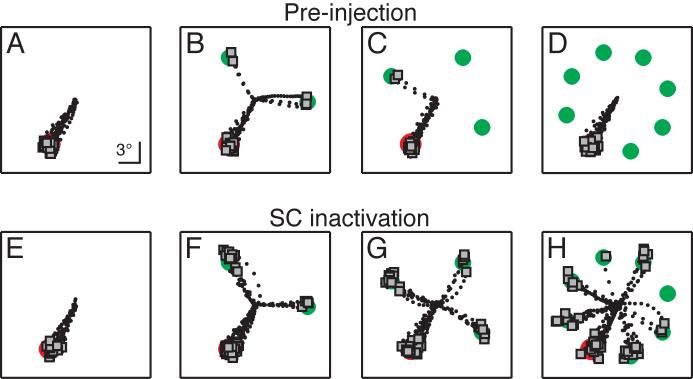Figure 1.
Effects of SC inactivation in a search task with variable numbers of distractors. Panels show spatial plots of eye position when the target appeared in the part of the field affected by the injection, pre-injection (A-D) and during inactivation (E-H). Trials began with fixation at the center. Black dots indicate eye position samples and gray squares indicate saccade endpoints, superimposed on a cartoon of the stimulus. The task was to make a saccade to the odd-colored target. Pre-injection, search performance improved when a greater number of homogenous distractors was present (B-D). After inactivation, saccades to a target without distractors could still be made (E), but performance declined as more distractors were presented (F-H), a reversal of the pre-injection trend. Notably, more errors are directed to stimuli flanking the target (H). The conditions with different numbers of distractors were randomly intermixed. The sizes of the target and distractor stimuli are not shown to scale.

